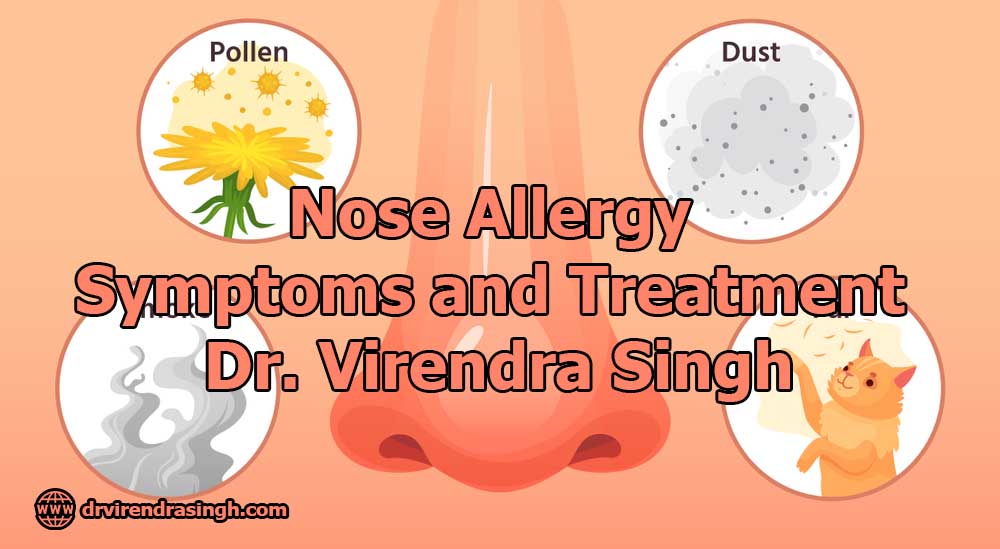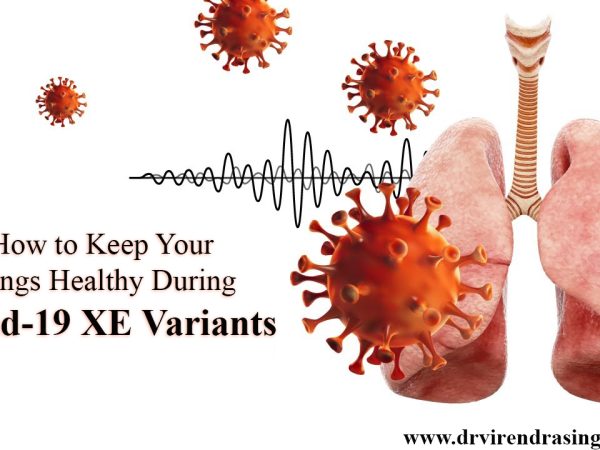
WHAT ARE THE SYMPTOMS OF NOSE ALLERGY AND HOW TO TREAT IT?
Hay fever (allergic rhinitis) An itchy nose, sneezing, congestion, and a sore throat can be symptoms of allergic rhinitis, also known as hay fever. Hay fever symptoms can be cause by pollen, pet dander, mold, and insects. Despite the unpleasant feeling of hay fever, lifestyle changes, allergy medications, and immunotherapy (allergy shots) can provide relief. However, read the article to know the nasal allergy symptoms and the treatment for nose allergy. Rhinitis may be caused by irritants or allergens. In response to these irritants or allergens, your body releases histamine and other chemicals. Rhinitis is usually a temporary condition. It clears up on its own after a few days for many people. Others, especially those with allergies, may suffer from chronic rhinitis. Usually, chronic illnesses occur or recur frequently. When exposed to allergens, rhinitis can last for weeks to months.
Nose Allergy: What is a Nose Allergy
The symptoms of nose allergy are caused by tiny particles in the air called allergens. Through your nose or mouth, you breathe in allergens that cause your body to release naturally occurring chemicals, including histamine. Also, hay fever can be caused by a variety of indoor and outdoor allergens. Pollen from trees and plants, dust mites, mold, and pet dander are some of the causes. Sneezing, nasal congestion, throat irritation, and eyes, and nose irritation are hay fever symptoms. It is important to differentiate between allergic rhinitis and infectious rhinitis, the common cold. There is no contagious nature to hay fever.
When does hay fever usually occur?
Hay fever can strike at any time of the year. As trees and weeds bloom and pollen counts rise, seasonal allergies occur in the spring, summer, and early fall. Perennial allergies can occur throughout the year. Pet dander, cockroaches, and dust mites are common irritants that cause allergies.
What are the symptoms of allergic rhinitis?
Several family members may be allergic to the same thing. Having an allergic parent or family member increases your chances of getting hay fever. Hay fever is more likely to occur in people with asthma or eczema.
CAUSES AND SYMPTOMS
How does allergic rhinitis (hay fever) occur?
The immune system of the body reacts to air pollutants to cause allergic rhinitis. Despite their tiny size, allergens (irritants) can be inhale through the nose or mouth. Most people are not allergic to allergens. Hay fever, however, is cause by your immune system mistaking the allergen for a foreign invader. By releasing natural chemicals into the bloodstream, your immune system tries to protect your body. Histamine is the main chemical released. The mucous membranes in the nose, eyes, and throat become itchy and inflamed as they attempt to expel the allergen.
Many allergens can cause seasonal and perennial allergies, including:
- Carpets, curtains, bedding, and furniture are all infested with dust mites.
- Tree pollen, grass pollen, and weed pollen.
- A pet’s dander (flake of dead skin).
- A mold spore.
- The saliva and waste of cockroaches.
Inflammation in the nose and throat can also be caused by food allergies. If, you should seek medical help if you think you are having an allergic reaction to something you ate. It is possible to die from food allergies.
How does allergic rhinitis (hay fever) present itself?
Symptoms of hay fever can appear throughout the year. Spring, summer, and early fall are the worst seasons for outdoor allergies. Pollen counts are higher during warm weather because weeds and flowers bloom. During the winter, people spend more time indoors, which can exacerbate indoor allergies caused by pet dander and dust mites.
Hay fever can cause the following symptoms:
- Runny nose, stuffy nose, and congestion in the nasal passages.
- The eyes, nose, and throat are itchy.
- Dark circles under the eyes, headaches, and sinus pain.
- Throat and nose mucus are more prominent.
- Malaise and fatigue (general feeling of discomfort).
- Postnasal drip causes a sore throat.
- Breathing difficulties and wheezing.
DIAGNOSTICS AND TESTS
What is the diagnosis of hay fever?
In addition to examining you, your healthcare provider will ask you about your symptoms and evaluate you for other conditions, such as a cold or asthma. A blood sample may be taken and sent to a lab for testing in order to determine your antibodies to specific allergens. An IgE test is a blood test that tests for immunoglobulin E. It can detect food allergies and other types of allergies. In order to determine what allergens are causing your symptoms, your provider may recommend a skin prick test.
How does a skin prick test work?
Although it may be uncomfortable, this common test is painless and accurate. To test for allergies, your provider scratches or pricks your skin with a needle while applying a sample of different allergens. You scratch your skin, the allergens penetrate underneath the surface. If In 15 to 30 minutes, the skin will become red, itchy, and irritated if you’re allergic to the allergen. An allergic reaction may cause you to develop wheals, which are raise, hive-like swellings. Using a skin prick test to determine which allergens are causing your symptoms is a safe and effective method.
TREATMENT AND MANAGEMENT
What is the treatment for allergic rhinitis (hay fever)?
You can manage hay fever symptoms with a variety of allergy medications. In addition to liquids, pills, eye drops, nasal sprays, and injections, these treatments also come in many forms. Pregnant women and those with other health concerns should consult their provider before taking any medication. Examples include:
Antihistamines: These medications are available both over the counter and with a prescription. During an allergic reaction, they work by blocking the histamine released by the body. In addition to pills, liquids, eye drops, nasal sprays, and inhalers, antihistamines can also be found as eye drops. Examples are:
- Claritine (Loratadine) is a calcium channel blocker.
- The drug Cetrizine (Zyrtec®).
- (Allegra®) Fexofenadine.
- Xyzal® (levocetirizine).
Drowsiness can be cause by antihistamines. Antihistamines should not be taken with alcohol, especially if you are driving. Decongestants are medications that reduce nasal and sinus congestion. In addition to decongestants, you can use nasal sprays or pills (in pill or liquid form).
Examples are:
- Inhalation spray with Afrin®.
- Neo-Synephrine nasal spray (phenylephrine).
- The pseudoephedrine in Sudafed®.
- Decongestants can cause headaches, insomnia, irritability, and an increase in blood pressure. If used for more than five days, nasal decongestants can become addictive. Always consult your healthcare provider before using them.
Inhalers and sprays containing corticosteroids reduce inflammation and alleviate hay fever symptoms. Flonase®, Nasacort®, and Rhinocort® are the most common nasal sprays. The most common side effects include headaches, nosebleeds, and cough.
Inflammation and hay fever symptoms are caused by leukotriene, histamines, and other chemicals released during an allergic reaction. So, they block leukotriene and are only available by prescription. Leukotriene inhibitors such as montelukast (Singulair®) are commonly used. When taking this medication, some people experience changes in mood, vivid dreams, involuntary muscle movements, and skin rashes.
The immune system is trained to tolerate allergens by immunotherapy. A provider gives you a series of injections (allergy shots) containing small amounts of the allergen. With every injection, your provider adds more allergens. As you develop immunity to an allergen, your immune system stops responding to it.
It is possible that your provider may recommend that you take immunotherapy pills under your tongue. Contact Dr. Virendra Singh for further consultation.



